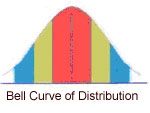Brain Bent
©Arlene R. Taylor PhD
 Every brain is believed to have a bent. Call it aptitude, talent, innate giftedness, preference, dominance, calling, lead, energy advantage, or any number of other appellations. My goal is to share information that will stimulate your thinking about brain bent in general and perhaps yours in particular, and to offer examples for observing and recognizing brain bent in yourself and in others. Use these Practical Applications as a springboard for your own increased awareness.
Every brain is believed to have a bent. Call it aptitude, talent, innate giftedness, preference, dominance, calling, lead, energy advantage, or any number of other appellations. My goal is to share information that will stimulate your thinking about brain bent in general and perhaps yours in particular, and to offer examples for observing and recognizing brain bent in yourself and in others. Use these Practical Applications as a springboard for your own increased awareness.
 In preparing these Practical Applications I have relied heavily on brain function research, a plethora of studies, and discussions with other brain researchers. Nevertheless, the summaries represent my own observations and opinions.
In preparing these Practical Applications I have relied heavily on brain function research, a plethora of studies, and discussions with other brain researchers. Nevertheless, the summaries represent my own observations and opinions.
Typically, conclusions from research studies are presented in the form of generalizations. They apply to nearly 70% of the population (e.g., the red portions on the drawing of the Bell Curve of Distribution that represent the first standard deviation on either side of the mean). Of the remaining 30%, some will tend to match the generalizations even more closely and some less closely.
Because each human brain develops uniquely, however, there are always exceptions. No two brains are believed identical in structure, function, or perception, not even the brains of identical twins—as every thought you think changes your brain and no two brains ever think identical thoughts. Therefore, some of your personal characteristics may be a mismatch between the information and your brain. Mismatches do not invalidate the research; they do exemplify individual uniqueness. Avoid discounting perceived first-impression mismatches too quickly. Perhaps you haven’t had the opportunity to hone a specific skill, have lived much of your life trying to meet expectations that led your away from your brain bent, or your personal past experiences have impacted you in unusual ways. Above all, have fun in the process of discovery.
Refer to Brain References for additional information and resources.

